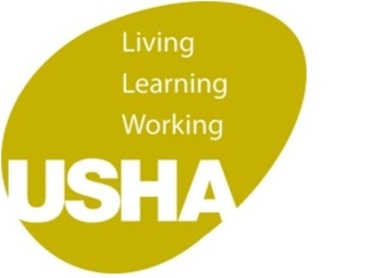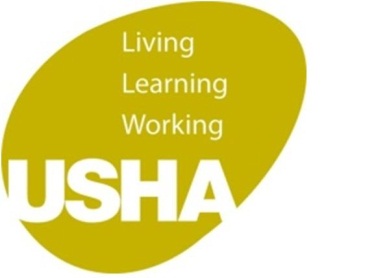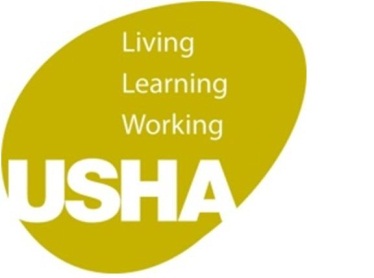Title Page
-
Site conducted
-
Conducted on
-
Prepared by
INSPECTIONS
A. ADMINISTRATIVE PROCEDURES
-
A1. Have any negative items from the former inspection been suitably <br>addressed?
-
Comments
-
A2. Have College rules for Safe Workshop Practice been formulated?
-
Comments
-
A3. Has the attention of all workshop users been drawn to these rules?
-
Comments
-
A4. Are copies of relevant Regulations, Codes of Practice, Guidance Notes and the University Health and Safety Policy available in the workshop?
-
Comments
-
A5. Is there a system in place to ensure that potential users receive full and adequate instruction and training in the safe operation of the equipment they propose to use?
-
Comments
-
A6. Is there a system in place to ensure that the level of supervision applied is commensurate with the skill and experience levels of individual workshop users?
-
Comments
-
A7. Have all operators of woodworking machines & abrasive wheels completed approved training courses?
-
Comments
-
A8. Are all users fully acquainted with the operation of any Permit-to-Work systems within the workshop area?
-
Comments
-
A9. Are written records kept documenting the training of users of workshop equipment?
-
Comments
-
A10. Are procedures for the recording and reporting of accidents, incidents and occupational ill health established?
-
Comments
B. FIRE, FIRST AID & GENERAL SAFETY PRECAUTIONS
-
B1. Are Fire Escape routes from the workshop clear of obstruction and suitably sign posted?
-
Comments
-
B2. Is the Fire Alarm easily audible above machinery noise?
-
Comments
-
B3. If 'poor', have visual warning systems been installed?
-
Comments
-
B4. Has suitable firefighting equipment been provided and checked/serviced annually?
-
Comments
-
B5. Is access to fire control equipment is unobstructed?
-
Comments
-
B6. Are notices displayed indicating actions to be taken in the event of a fire (Fire Action Notices)?
-
Comments
-
B7. Are workshop users acquainted with the Fire Routine Procedure for the workshop area or building?
-
Comments
-
B8. Have Fire Wardens been appointed to cover the workshop area?
-
Comments
-
B9. Are notices displayed detailing the nearest available qualified First Aiders, and the location of the First Aid Boxes?
-
Comments
-
B10. Are First Aid boxes checked regularly to ensure that they are kept well stocked, with contents in good condition?
-
Comments
-
B11. Is there a suitable eye wash station installed? (Where running water is available this should be of the type plumbed to the mainswater supply).
-
Comments
-
B12. Are workshop users able to readily contact the Emergency Services, should this be required?
-
Comments
-
B13. Are suitable Warning, Mandatory and Prohibition signs displayed within the workshop area as required (e.g. warning - noise hazard; mandatory - eye protection must be worn, etc.)
-
Comments
-
B14. Do these signs comply with the Health and Safety (Signs and Signals) Regulations, 1996 i.e. are they of a pictogram style and hazard: black on yellow; mandatory: white on blue; prohibitive: white on red?
-
Comments
-
B15. Are Material Data Safety Sheets (MSDS) are available for all products used in the workshop?
-
Comments
C. CLEANLINESS & HOUSEKEEPING
-
C1. Are all items of workshop equipment suitably placed to avoid overcrowding and anchored to ensure stability?
-
Comments
-
C2. Are the working areas and gangways clean and clear of obstructions and/or slipping hazards?
-
Comments
-
C3. Are floors in a safe condition with no cracks, slippery or uneven patches etc.?
-
Comments
-
C4. Is there enough space for the safe storage of materials & equipment?
-
Comments
-
C5. Are toilets & washbasins clean & in working order?
-
Comments
-
C6. Are hot and cold (or warm) running water, soap and cleaning hand/drying facilities provided?
-
Comments
-
C7. Is smoking & eating prohibited in the workshop area?
-
Comments
D. PPE & MACHINE SAFETY
-
D1. Are requisite items of general personal protective clothing and equipment supplied to users?
-
Comments
-
D2. Where a risk assessments highlights the need, have all users of RPE received a Face Fit test and training on use, maintenance and storage of respirators?
-
Comments
-
D3. Are items of PPE kept in an appropriate dedicated storage area?
-
Comments
-
D4. Are rules on personal clothing, jewellery etc. strictly enforced?
-
Comments
-
D5. Is suitable PPE available for emergency use e.g., chemical spillages?
-
Comments
-
D6. Are all available machine guards suitable for the task at hand?
-
Comments
-
D7. Are available guards used when operating the machinery?
-
Comments
-
D8. Where guards cannot give full protection, are work holders, jigs or push sticks used?
-
Comments
-
D9. Do all machine users know that guards must be used and how to operate them?
-
Comments
-
D10. Are all guards & other safety devices inspected & tested regularly?
-
Comments
-
D11. Are these guarding inspections and tests recorded?
-
Comments
-
D12. Are emergency stop buttons or pedals easily identifiable & within easy reach?
-
Comments
-
D13. Are operating controls clearly marked to show what to do?
-
Comments
-
D14. Is information about safe working loads, speeds etc. clearly displayed on applicable equipment?
-
Comments
-
D15. Are all identified machinery and associated equipment maintained and serviced on a regular basis according to manufacturer’s instruction and records kept of these activities?
-
Comments
-
D16. Is the machine disconnected or isolated from the power supply before electrical parts are exposed (for maintenance and repair)?
-
Comments
-
D17. Are there precautions to prevent unintentional start-up of machinery?
-
Comments
-
D18. Is the cutting oil & coolant regularly changed, according to manufacturer’s instructions?
-
Comments
E. LIGHTING
-
E1. Is the general level of illumination of the workshop adequate for the work to be carried out and in working order, clean and free of flicker or glare?
-
Comments
-
E2. Are the ceiling lights suitable for the workshop i.e. enclosed?
-
Comments
-
E3. Is suitable supplementary local lighting available, where required?
-
Comments
F. TEMPERATURE & VENTILATION
-
F1. Is the ambient temperature in the workshop suitable for the work to be carried out?
-
Comments
-
F2. Is general ventilation of the workshop area satisfactory and without drafts?
-
Comments
G. NOISE
-
G1. Do workshop operations produce an excessive or uncomfortable noise level?
-
Comments
-
G2. If so, has noise monitoring been requested and carried out?
-
Comments
-
G3. Where required, have suitable forms of engineering control been implemented to control the noise at source?
-
Comments
-
G4. Where in G3 is not practicable, are suitable ear defenders used?
-
Comments
-
G5. Are mandatory ear protection zones designated where applicable i.e. where daily noise exposure exceeds 85dB(A)?
-
Comments
H. HAZARDOUS SUBSTANCES
-
H1. Are there any substances which may present a hazard to health in use within the workshop area?
-
Comments
-
H2. If so, have suitable COSHH assessments been carried out, documented and records kept?
-
Comments
-
H3. Are staff aware of the conclusions and recommendations for safe working, with these substances, resulting from the COSHH assessments?
-
Comments
-
H4. Is suitable Local Exhaust Ventilation (LEV) employed to remove hazardous fumes, oil mists, vapours, gases or dusts, and are these items subject to regular maintenance and performance checks i.e. at least every 14 calendar months?
-
Comments
-
H5. Are all hazardous substances stored appropriately i.e. incompatible chemicals segregated, labelled, drip trays used?
-
Comments
-
H6. Is appropriate personal protective equipment available, specifically matched to the hazard against which it is to protect, and are these items subject to regular checks to ensure they remain in good condition?
-
Comments
-
H7. Are any specific First Aid actions that may be required following contamination with specific hazardous substance recorded and available to users?
-
Comments
-
H8. Are suitable means of dealing with spillages of any hazardous substances available?
-
Comments
-
H9. Is there a system for the disposal of potentially hazardous wastes which is in line with the University waste management policies?
-
Comments
I. ELECTRICAL EQUIPMENT
-
I1. Are all items of portable electrical equipment subject to a suitable regime of appliance testing and maintenance?
-
Comments
-
I2. Are all electrical equipment subject to pre-use checks?
-
Comments
-
I3. Is 110 volt or battery powered equipment used whenever possible?
-
Comments
-
I4. Can the power supply to the workshop be isolated to ensure that only authorised personnel are able to operate the machinery?
-
Comments
-
I5. Are items of hard-wired equipment likewise subject to regular maintenance checks, and is suitable remedial action applied, where required?
-
Comments
-
I6. Is the electrical installation forming part of the fabric of the workshop accommodation subject to regular maintenance checks?
-
Comments
-
I7. Where a risk assessment indicates a requirement for residual current protection (e.g. live working, wet areas, etc.) has a suitable RCD been fitted to the room electrical supply?
-
Comments
J. LIFTING OPERATIONS & WORKING AT HEIGHT
-
J1. Are heavy lifting operations carried out within the workshop area?
-
Comments
-
J2. If so, have all items of lifting equipment been notified to the University’s Engineering Insurers, via Insurance Office, Finance Department?
-
Comments
-
J3. Are all pressure and lifting equipment checked for defects prior to use?
-
Comments
-
J4. Is the Safe Working Load (SWL) clearly marked on each piece of lifting equipment?
-
Comments
-
J5. Is adequate head, hand and foot protection available to personnel involved in lifting operations?
-
Comments
-
J6. Are personnel acquainted with techniques for safe manual handling?
-
Comments
-
J7. Where required, have individual users been formally trained in lifting and handling techniques e.g. fork lift training, slinging, heavy manual handling, and have individual training records been kept?
-
Comments
-
J8. Where a task involves a foreseeable risk of injury, has a formal manual handling risk assessment been carried out and documented, and have the results of the assessment been communicated to relevant workers?
-
Comments
-
J9. Are all available ladders certified to BS EN 131 standard?
-
Comments
-
J10. Are regular user checks carried out and recorded on the condition of all ladders?
-
Comments
K. PRESSURE SYSTEMS & LIFTING EQUIPMENT
-
K1. Have all items of pressurised equipment been notified (as a requirement of the PSSR) to the University’s Insurers, via the Health and Safety Department?
-
Comments
-
K2. Is the Safe Working Pressure (SWP) clearly marked an each item of equipment?
-
Comments
-
K3. Are all interlocks and other safety devices on pressure vessels fully functional and adequately maintained?
-
Comments
-
K4. Are rules in force to strictly control the use of compressed air equipment?
-
Comments
-
K5. Are gas cylinders attached to a support or trolley?
-
Comments
-
K6. Are gas cylinder, regulator, valves & tubing in good condition?
-
Comments
-
K7. Is the correct regulator fitted and is it in date?
-
Comments
-
K8. Are annual regulator checks carried out and records kept?
-
Comments
L. OCCUPATIONAL HEALTH
-
L1. Where the potential exposure to a substance or material hazardous to health cannot be fully controlled by either engineering control or personal protective equipment, has suitable health surveillance been implemented via the University’s Health & Safety Unit?
-
Comments
-
L2. Where respiratory sensitizers are in use (e.g. processes involving isocyanates, solvents, etc.) are there suitable engineering control measures, personal protection and/or health surveillance in place?
-
Comments
-
L3. Where a risk assessment has identified the use of respirators, has an assessment been carried out, which includes the requirement for face fit tests?
-
Comments
-
L4. Are suitable barrier creams available to aid in skin protection, and are checks carried out to ensure that workshop users are not developing dermatitis problems?
-
Comments
-
L5. Do any workshop activities involve vibration to the extent that vibration related conditions, e.g. vibration white finger, might be a potential problem?
-
Comments
M. Welding Activities
-
M1. Have the risks from welding activities been assessed, recorded, and all identified issued addressed?
-
Comments














